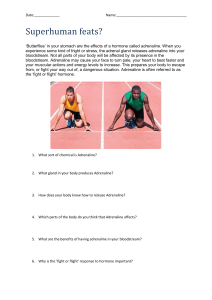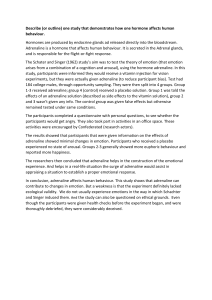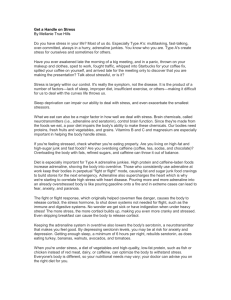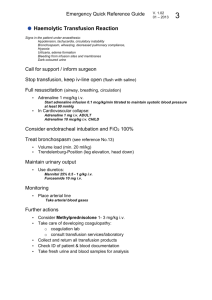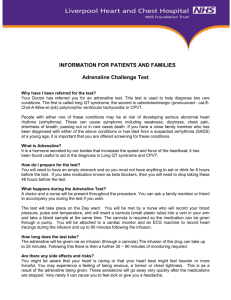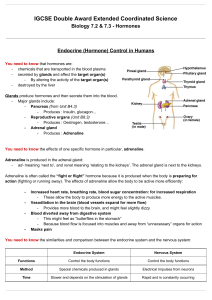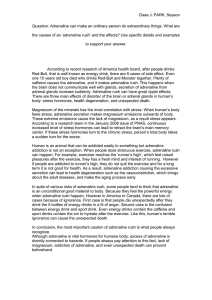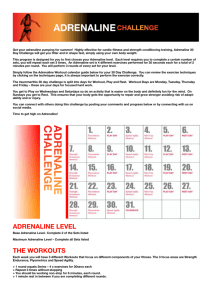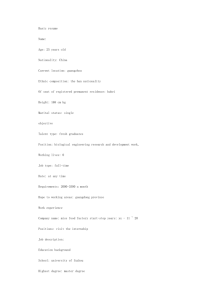B7.2 Revision notes
advertisement
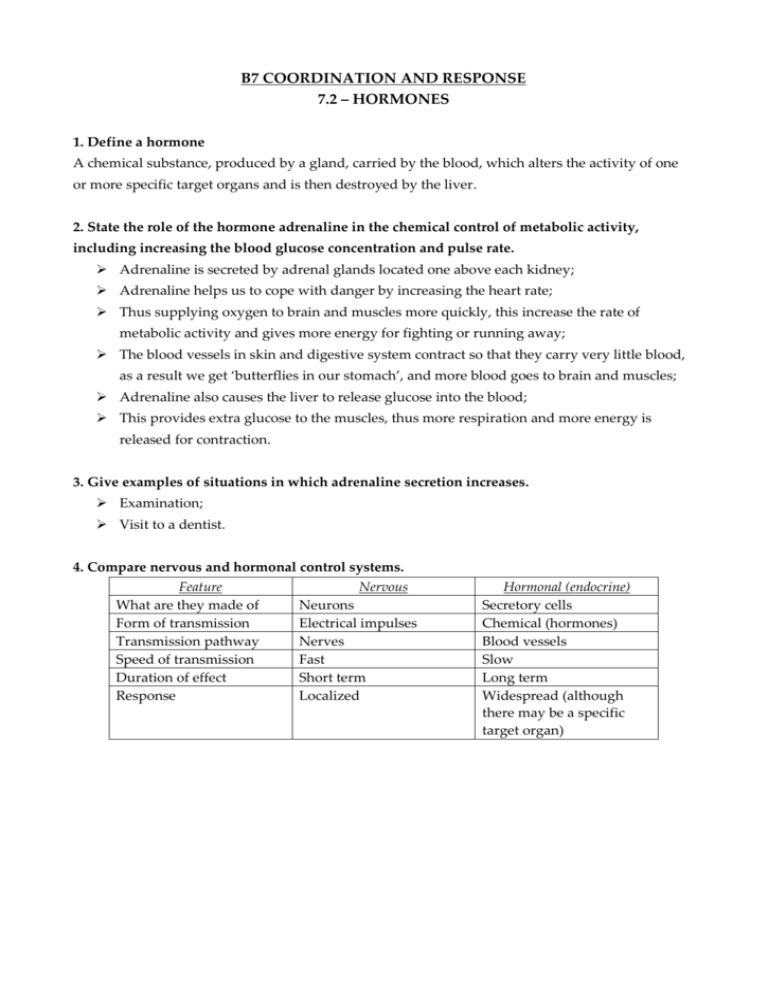
B7 COORDINATION AND RESPONSE 7.2 – HORMONES 1. Define a hormone A chemical substance, produced by a gland, carried by the blood, which alters the activity of one or more specific target organs and is then destroyed by the liver. 2. State the role of the hormone adrenaline in the chemical control of metabolic activity, including increasing the blood glucose concentration and pulse rate. Adrenaline is secreted by adrenal glands located one above each kidney; Adrenaline helps us to cope with danger by increasing the heart rate; Thus supplying oxygen to brain and muscles more quickly, this increase the rate of metabolic activity and gives more energy for fighting or running away; The blood vessels in skin and digestive system contract so that they carry very little blood, as a result we get ‘butterflies in our stomach’, and more blood goes to brain and muscles; Adrenaline also causes the liver to release glucose into the blood; This provides extra glucose to the muscles, thus more respiration and more energy is released for contraction. 3. Give examples of situations in which adrenaline secretion increases. Examination; Visit to a dentist. 4. Compare nervous and hormonal control systems. Feature What are they made of Form of transmission Transmission pathway Speed of transmission Duration of effect Response Nervous Neurons Electrical impulses Nerves Fast Short term Localized Hormonal (endocrine) Secretory cells Chemical (hormones) Blood vessels Slow Long term Widespread (although there may be a specific target organ)


